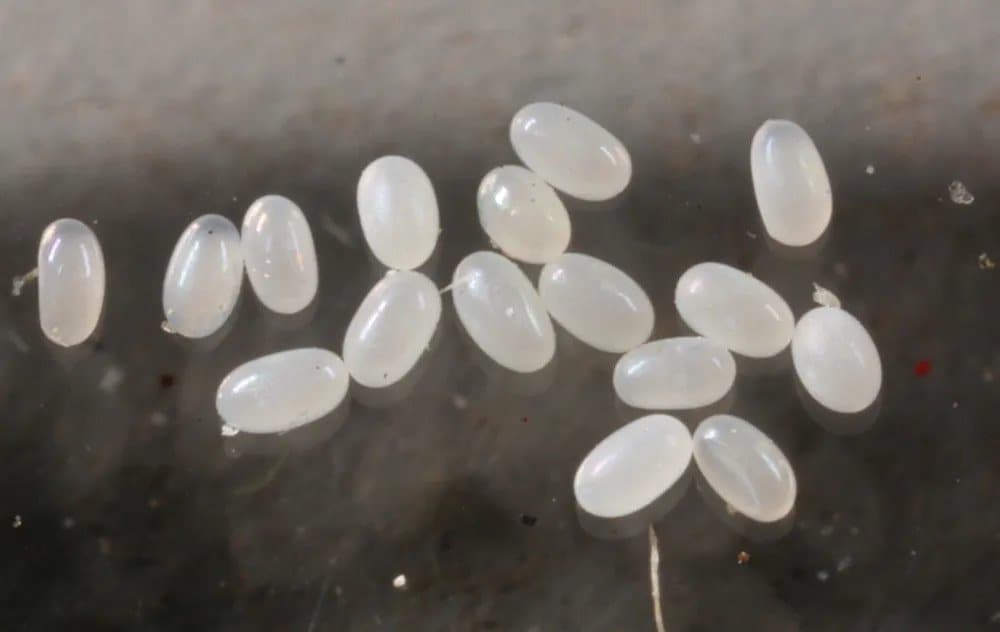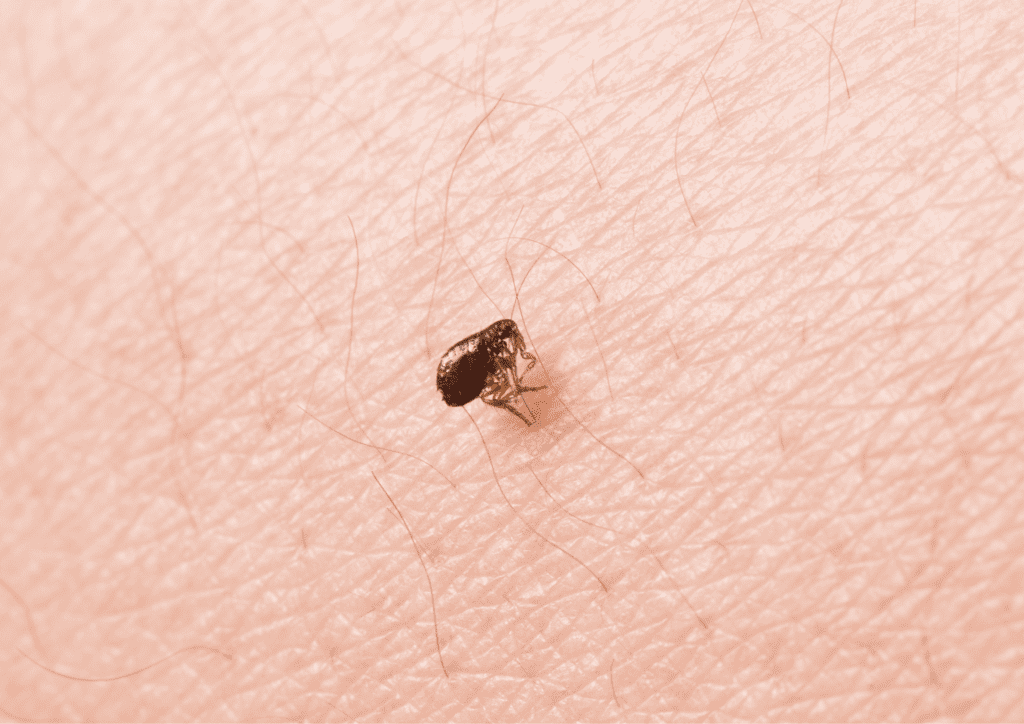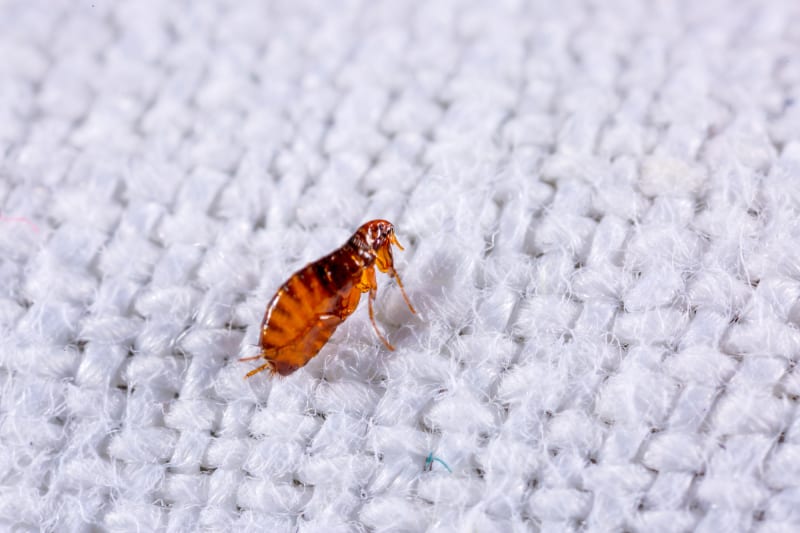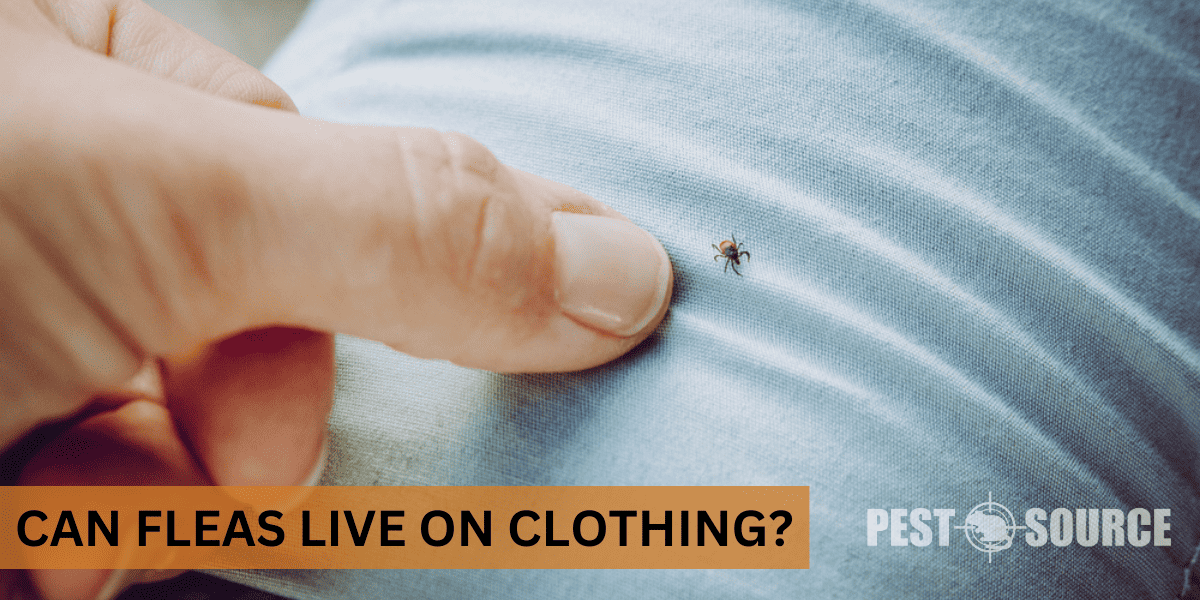Fleas are notorious for their biting and infestations, which can cause distress to both humans and pets. These tiny, elusive parasites don’t discriminate when it comes to finding shelter—they can survive on clothing, bedding, and various other fabrics.
In this article, we explore whether fleas can live on clothing, their interaction with clothes, the risks they pose to humans, and the preventative steps you can take to protect yourself from these unwelcome critters. Knowing how to identify, control, and prevent fleas in your home is essential for maintaining a healthy environment for you and your pets.
POINTS
- Fleas can live on clothing and bedding for short periods while searching for a host, with adult fleas surviving a few hours to a couple of days on clothing.
- Humans can carry fleas on their clothes and inadvertently transport them from one location to another, potentially spreading infestations.
- Fleas can bite through thin materials and even though they are unlikely to bite through thicker clothing, they can still crawl and find exposed skin on which to feed.
- Flea eggs, larvae, and pupae are more resilient than adult fleas, creating the need for prompt action to prevent further infestation.
- To get rid of fleas on clothes, it’s essential to wash infested items in hot water, dry them on high heat, and clean your home thoroughly, especially your pet’s bedding and environment.
Can Fleas Live on Clothing?
What is the potential of fleas living on clothing?

Fleas have the potential to live on clothing for short periods of time, mainly as a temporary refuge while they search for a suitable host to feed on. Generally, fleas prefer to stay directly on their hosts rather than on clothing or other inanimate objects, but they can still latch onto clothes, especially if they are loose or have come into contact with an infested animal or environment.
How long can fleas typically live on clothing?
Fleas don’t often live on clothing for extended periods because they cannot survive without feeding on a host. Most adult fleas can survive a few hours to a couple of days on clothing. However, without a host, they will eventually die due to dehydration and starvation.
Understanding the survival potential of fleas on various clothing materials can help you better manage and prevent infestations. Below is a table comparing how long fleas can potentially live on different types of fabric, along with the associated risk levels for each material:
| Material Type | Survival Time | Risk Level |
|---|---|---|
| Cotton | Up to 24 hours | Moderate |
| Wool | Up to 48 hours | High |
| Linen | Up to 12 hours | Low |
| Synthetic | Few hours | Very Low |
Can fleas live on clothes for more than 24 hours?
It is unlikely that adult fleas will live on clothes for more than 24 hours. However, certain type of clothing and environmental conditions, such as warmer temperatures and high humidity, may enable them to survive slightly longer. Flea larvae and pupae, on the other hand, can survive for extended periods without a host as they are more resilient.
Can fleas live in clothing, such as those stored in wardrobes or closets?

Fleas can indeed infest clothing that is stored in wardrobes or closets, especially if these areas are dark and damp, which creates an ideal environment for fleas and their offspring. Therefore, it is essential to regularly clean and vacuum closets and wardrobes where infested clothing may be stored to minimize the chance of flea infestations.
How Do Fleas Interact With Clothing?
Do fleas stay on clothes, or do they move quickly to find a host?

Fleas are opportunistic parasites that prefer to live directly on their host. While they may occasionally find themselves on clothing, they will generally attempt to move quickly to locate a host for feeding. If they cannot find a host within a reasonable time, they will likely die or leave the clothing in search of a more conducive environment.
Can fleas attach or stick to clothes?
Fleas can attach themselves to clothing, especially if the clothes are made from natural fibers such as cotton, wool, or linen. Their legs are designed for gripping and jumping, allowing them to latch onto fabric fibers and move toward their next host. However, they do not have the ability to bury themselves in the fabric or cling to it in the same way as ticks or other parasites.

What is the possibility of finding flea eggs on clothes?

Flea eggs are smooth, oval-shaped, and about 0.5mm in size, making them challenging to spot on clothing. Nonetheless, it is possible to find flea eggs on clothes, particularly if they have been in contact with an infested pet, person, or environment. Flea eggs do not adhere to surfaces and can easily fall off, so they may be scattered throughout a home, including on clothes and in closets or wardrobes.
How Do Fleas Affect Humans Through Clothing?
Can humans carry fleas on their clothes?
Yes, humans can carry fleas on their clothes. If a person comes into contact with an infested animal or environment, fleas may latch onto their clothing in search of a new host. Although fleas prefer to feed on furry animals, they will bite humans if given the chance.
Can fleas travel from one location to another on human clothing?

Fleas can indeed hitch a ride on human clothing, allowing them to travel from one location to another. For example, if you visit a friend’s house with a flea infestation, it’s possible for fleas to jump onto your clothes and accompany you back to your home, thus spreading the infestation.
Can humans inadvertently transport fleas from one home to another via their clothes?
Unfortunately, humans can inadvertently transport fleas from one home to another on their clothing. This is especially concerning if you unknowingly carry flea eggs, larvae, or pupae, as these stages of the flea life cycle are more resilient and can survive in your home without a host for extended periods.
Can Fleas Bite Through Clothing?
Fleas have the capability to bite through certain types of fabrics, which can vary in susceptibility depending on their thickness and material. Below is a table that details the likelihood of fleas biting through different types of clothing materials, providing insight into how to better protect yourself from flea bites.
| Fabric Type | Can Fleas Bite Through? | Notes |
|---|---|---|
| Thin Materials (e.g., silk, linen) | Yes | Easier for fleas to bite through |
| Thick Materials (e.g., denim, wool) | No | Fleas may crawl to find exposed skin but cannot bite through |
| Synthetic Fibers (e.g., polyester) | Rarely | Less likely to allow flea bites due to tighter weaves |
What is the likelihood of fleas biting through clothes?

Fleas have sharp mouthparts that can bite through some types of fabrics, particularly thinner and more delicate materials. While fleas are unlikely to bite through thicker clothing, they can still crawl around and find exposed skin to feed on.
Can fleas bite through various types of clothing, such as thick or thin materials?

Fleas can bite through thin materials more easily than thicker, more durable clothing. However, even if fleas cannot bite through thicker clothing, they can still crawl and find an opening or exposed skin to feed on. It’s essential to be cautious when dealing with flea infestations, regardless of what type of clothing you are wearing.
How Do Fleas Travel and Spread?
How does the process of fleas spreading occur?
Fleas spread primarily through their impressive jumping abilities, which allow them to leap up to 13 inches horizontally and 7 inches vertically. This makes it easy for them to jump from host to host or onto objects, such as clothing and bedding. They can also travel by attaching to animals or humans and being transported from one location to another.
To gain a visual understanding of how fleas accomplish their remarkable jumping feats, watch this video that captures the action in detail:
Can fleas travel on humans without the need for clothing?

While fleas prefer to stick to furry hosts, they can still attach themselves to humans and feed on their blood, even without clothing. It’s less common for fleas to infest human skin directly because they prefer the natural protection provided by fur, but it can still happen in cases of severe infestation.
What are the typical ways that fleas travel and spread?
Fleas travel and spread through various means, including:
- Jumping from host to host
- Attaching to clothing or other fabrics
- Being carried on pets, especially outdoor cats and dogs
- Hitching a ride on wild animals, such as rodents or birds
- Infesting previously contaminated environments, like pet bedding or carpets
Can Fleas Live on Bedding?
Understanding the behavior of fleas on various types of bedding is crucial for effective pest management in your home. The table below outlines how long fleas and their different life stages can survive on bedding, providing key details to aid in infestation control.
| Bedding Type | Survival Time of Fleas | Survival Time of Eggs, Larvae, and Pupae | Notes |
|---|---|---|---|
| Standard Cotton | Several hours to 2 days | Up to several weeks | Regular washing needed to prevent infestation |
| Fleece | Up to 2 days | Several weeks to months | Fleece provides a warm environment conducive to flea development |
| Polyester Blends | Few hours to 1 day | Up to a few weeks | Less hospitable for fleas but requires vigilance |
| Wool | Up to 2 days | Up to several months | Wool’s dense fibers are ideal for flea and egg retention |
Can fleas survive on other types of fabrics such as bedding?

Yes, fleas can survive on bedding, particularly if it has come into contact with an infested host. Similar to their behavior on clothing, fleas may use bedding as a temporary habitat while they search for a host. Infested bedding provides an ideal environment for fleas to lay their eggs, which can then develop into larvae and pupae, perpetuating the infestation.
How long can fleas and their eggs live on bedding?
Adult fleas can survive on bedding for several hours to a couple of days without a host. However, flea eggs, larvae, and pupae are more resilient and can survive for longer periods on bedding, making it crucial to address the infestation as soon as possible. Flea eggs can hatch within 2 to 14 days, while larvae and pupae may take several weeks to develop into adult fleas.
How to Get Rid of Fleas on Clothes?
What are the best ways to remove fleas from clothes?
To remove fleas from clothes, follow these steps:
- Wash the infested clothes in hot water (at least 140°F or 60°C) to kill fleas and their eggs.
- Dry the cleaned clothes on high heat for at least 30 minutes to ensure that any remaining fleas are eliminated.
- Vacuum your closets, carpets, and any other areas where the infested clothes may have been in contact to remove flea eggs, larvae, and pupae.
- Regularly clean and launder your clothes and bedding to prevent future infestations.
- Consider using flea treatments and preventatives for your pets to avoid bringing fleas into your home.
Can you visually identify fleas on clothes?

Fleas can be challenging to spot on clothes due to their small size and fast movements. Adult fleas are typically about 1/8 of an inch long, flat-bodied, and reddish-brown. If you suspect fleas on your clothes, you can try looking for tiny black specks (flea feces) or white oval-shaped specks (flea eggs) that may indicate their presence.
Conclusion
Summary of key findings
Fleas can live on clothing and other fabrics such as bedding, typically for short periods, while they search for a host. Fleas can also spread through clothing and affect humans, potentially causing infestations in previously uninfected homes. While it is unlikely that fleas will bite through most clothing, their ability to crawl and find exposed skin means that precautionary measures are crucial in dealing with fleas.
Importance of understanding fleas’ behavior on clothes
Understanding fleas’ behavior on clothes can help you identify, control, and prevent infestations by following appropriate cleaning routines and staying vigilant. By being aware of the potential risks and taking necessary measures, you can minimize the chances of flea infestations and maintain a healthy, flea-free environment for you and your pets.



